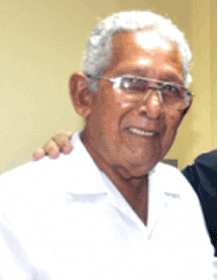Colonial Yucatan, in the second half of the 1700s, had two African settlements or villages by the name of San Francisco de Paula and San Fernando Ake which have a very interesting history. However, in my curiosity to know about the Olmecs, I came across the following information which I would like to share with you, our dear readers of this column. It is as follows:
OLMEC COLOSSAL HEADS ARE OF MESOAMERICAN AND NON-AFRICAN ORIGIN
UNAM (Universidad Nacional Autónoma de México)
February 9, 2020
• University archaeologists discard the theory that the oldest civilization in Mesoamerica has its roots in Africa
• They carried out studies of mitochondrial DNA in human remains found in archaeological sites in Veracruz
• They confirm that the Olmecs belong to one of the most abundant groups among the population’s founders and indigenous people of America
The origin of the colossal Olmec heads is not African, as has been rumored for 150 years, but Mesoamerican, said Ann Cyphers, an academic at the Institute of Anthropological Research (IIA) of the UNAM, who together with her collaborators have carried out studies of mitochondrial DNA that prove the identity of the Olmecs, the oldest civilization in these lands. The expert recalled that the theories of African origin and transoceanic migrations are deeply rooted in the collective imagination, so “it has been very difficult to shake off these ideas.” Ann Cyphers, discoverer in 1994 of the most recent of the 17 Olmec heads known so far, found in the archaeological site of San Lorenzo Tenochtitlan, in Veracruz, explained that this thesis dates from 1869 and was proposed by José María Melgar y Serrano, who reported the first colossal head (called Hueyapan), in what is now Tres Zapotes, Veracruz. “At that time the existence of the Olmec culture was not known, and Melgar proposed that the features of the sculptures corresponded to characters from Ethiopia, black people, more than anything because of the facial features. Hence this speculation was born and a controversy was formed that haunts us in Olmec archeology”.
For the researcher, the wide and flattened features of the faces of the colossal heads are explained by the fact that the thrones of the rulers, which were large prisms, were recycled to make the sculptures. Reusing the thrones was important, because in addition to being a symbol of the ruler, this prevented bringing more rocks from other towns. Since they wanted the head to be as large as possible, they accommodated the image of the ruler in the prism and the face was deformed. “That greatly clarifies the why of the compressed features. It is understood, for example, the nose and the wide mouth, because no head has projecting elements, everything is compact, glued, it is part of the prism”.
DNA studies
In excavations carried out over the years at Olmec sites and scientifically studying various pieces of that civilization, university archaeologists have found no African artifacts; This is a first line of investigation that discards the origin in that continent. The second line contemplates DNA studies, which before could not be done because there were no Olmec burials, “the ones that had been found were in dust. But we found some in San Lorenzo Tenochtitlan, and Enrique Villamar Becerril, a collaborator of my group, did the study of mitochondrial DNA”, he explained. In this regard, Villamar indicated that two burials were sampled: one in Loma del Zapote (dating from 1,200 BC) and another in San Lorenzo (1,000 BC). “From these two individuals, a bone sample was taken from the rib and underwent a procedure to obtain their mitochondrial DNA, the lineage that the mother provides to an individual, because it is more feasible to recover it from archaeological remains.” This is how he managed to classify that genetic information, called haplogroup. “The genetic diversity of mitochondrial DNA can be classified according to the similarities that exist in various individuals, and they may share some mutations that make them different from other individuals in different geographic regions of the world.”
These differences make it possible to define which group they belong to, and thus mitochondrial DNA is classified into haplogroups. “We obtained the haplogroup of these two subjects and we learned that they belong to A, one of the most abundant among the founding and indigenous populations of America. If they had been Africans, the haplogroup would be L, which is characteristic of these populations”, he highlighted. Furthermore, Cyphers noted, if there were African genetic material in the Olmecs, it would not only be seen in burials, but in later populations, since haplogroup L (which was not found here) would have been preserved. In 300 Mesoamerican burials from different periods it is not present.” Regarding the discovery of the colossal head 17, he commented: “We were looking for houses and suddenly it appeared, it was like a dream. Each new thing contributes to changing the perception of what that culture was like”. Describing the Olmecs, Cyphers said: they were “the first civilization of Mesoamerica, powerful rulers; in a word, a civilization”.
[email protected]
September 5, 2021
Finca Solana
Corozal Town

